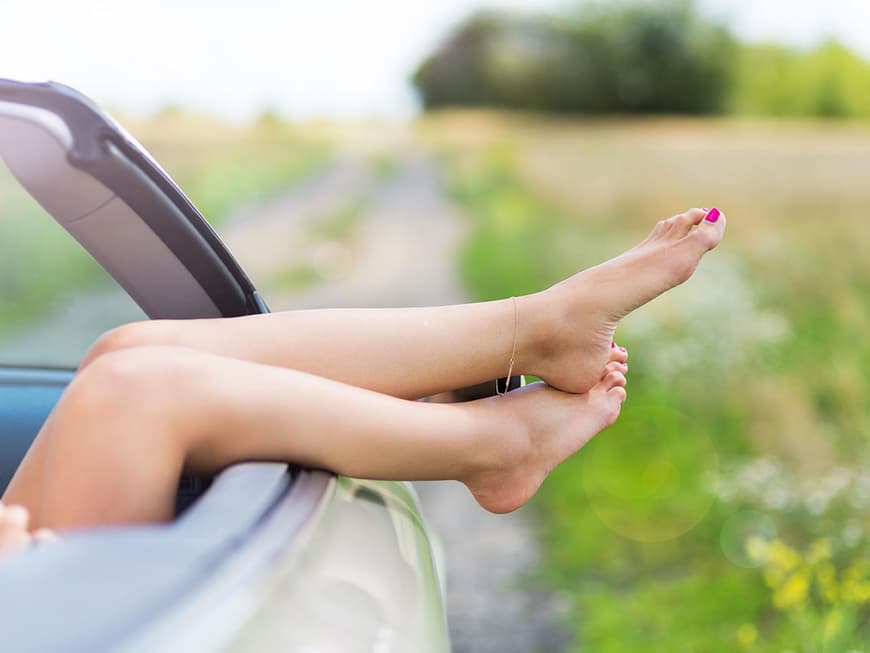
- What are varicose veins?
- Symptoms of varicose veins
- Causes of varicose veins
- Preventing and treating varicose veins
What are varicose veins?
As vein changes occur in most people over time, it is not surprising that they are a widespread condition among the German population. Varicose veins, also known as varicose veins, are permanently enlarged veins that usually occur in the legs, but rarely also in the pelvic area. Visually, they also stand out clearly under the skin. Varicose veins are not only perceived as cosmetically unpleasant, they can even become a medical problem. Varicose veins can develop either if the veins are too weak for genetic reasons (primary varicose vein disease) or if the blood flow is impeded by thrombosis in the legs (secondary varicose vein disease). The outer veins become visible under the skin and protrude slightly. If small veins are affected, they are called spider veins; if they are larger, they are called varicose veins. Varicose veins that develop during pregnancy often disappear again after delivery. However, it often takes a year before the veins are no longer visible. The common varicose veins, however, hardly ever disappear. Once the veins have undergone pathological changes, they can no longer return to their original, healthy state and therefore represent a chronic condition.
Symptoms of varicose veins
Varicose veins can be recognized by the noticeable bluish, nodular thickenings under the skin. The first signs can already appear in young adulthood and appear as small, blue-colored spider veins. If your disease is already at an advanced stage, this is known as varicose vein disease. Increased varicose veins can lead to a feeling of heaviness in your legs. Itching and a localized feeling of pressure can also indicate that you are suffering from varicose veins. Even if they are usually harmless, you should see a doctor early on and not ignore varicose veins. If you ignore them, you run the risk of later vein inflammation or even thrombosis.
Causes of varicose veins
Age and the associated weakening of the connective tissue is a factor in the development of varicose veins. Varicose veins cannot therefore be completely prevented. Weak vein walls can also be hereditary. If you stand or sit for too long without moving, the muscle pump becomes slack, making it easier for the blood to pool. If you work mainly in a sitting position, there is also a risk that the veins in the back of the knee will kink, which also hinders the return flow of blood.
Women are also affected much more frequently than men. On the one hand, pregnancy favors the development of varicose veins, and on the other, oestrogen causes the connective tissue to become flabbier. A high weight also exerts pressure on the blood vessels and can widen them in the long term, thus promoting varicose veins. Fashionable, but not practical: constricting clothing has a similar negative effect.
Preventing and treating varicose veins
However, there are a few helpful tips you can follow to prevent the development of varicose veins:
- Wear flat shoes and no constricting clothing
- Elevate your legs from time to time
- Prevent obesity by eating a healthy, low-fat diet
- Exercise is particularly helpful as it strengthens the connective tissue and activates the muscle pump - jogging and swimming are particularly recommended
- Use the stairs instead of the elevator
- Reduce long periods of sitting or standing. If this is not possible, do simple leg exercises in the meantime
- Walk barefoot more often
- Use alternating warm leg showers
- Treat yourself to massages with oils that promote blood circulation
- Seeing a doctor at an early stage will prevent complications from varicose veins
If it is already too late for you to prevent varicose veins, you can fortunately still fall back on various treatment options. Various plant-based tablets are available for treatment. The medication must be taken over a longer period of time and helps to stabilize the vascular walls. Examples include red vine leaves and rust chestnut extracts. Smaller varicose veins can also be sclerosed. The doctor injects a special foam or liquid into the affected veins. These damage the inner wall of the veins, causing them to stick together and form a tissue-like strand. Important: Be sure to exercise after the procedure so that the blood flow in the remaining veins is stimulated!
In endovenous treatment, on the other hand, the veins are sealed from the inside using heat. This can be done using laser therapy or electromagnetic waves from radiofrequency ablation. As a final step, you can also have the varicose veins surgically removed. There are two types. In stripping, the veins are pulled out of the leg using a probe. In a crossectomy, on the other hand, the doctor attempts to cut the large varicose veins where they open into deeper leg veins.
